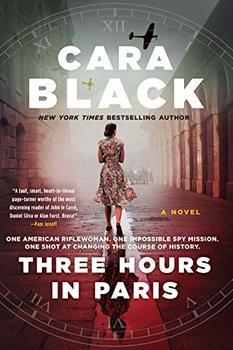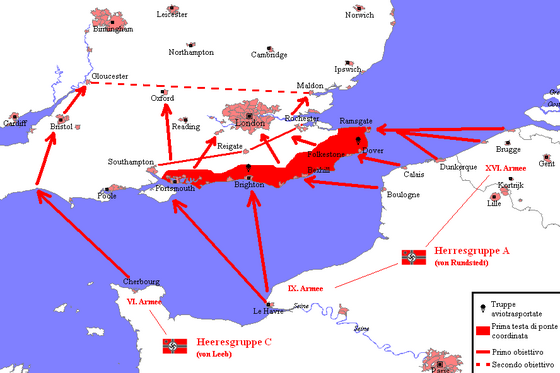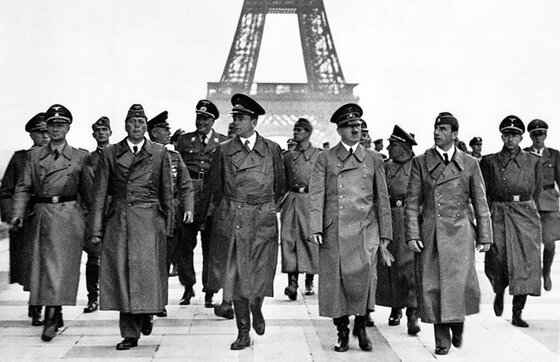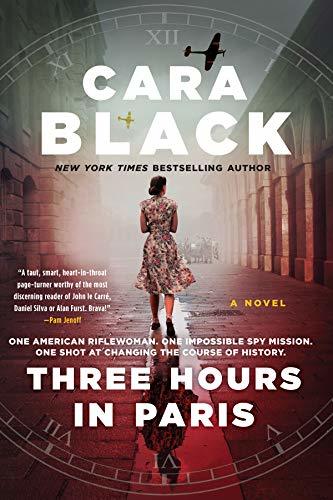
Estimated reading time: 5 minutes
England shuddered in terror in the summer of 1940. Following the evacuation of the British Expeditionary Force from Dunkirk in May, Nazi Germany’s U-boat campaign threatened to starve the British people, and an invasion was imminent. Preparations for Operation Sea Lion were underway, revealed by a growing chorus of chatter in German radio communications. In response, a shadowy British intelligence unit known as Section D sent a wave of agents into France on desperate, often suicidal, missions to frustrate Hitler’s plans. San Francisco mystery novelist Cara Black writes convincingly about one of those missions in her heart-pounding new World War II espionage thriller, Three Hours in Paris. The story she tells never happened. But it might’ve.
It’s a high-stakes cat-and-mouse game. The cat is Gunter Hoffman, a brilliant former Munich homicide detective pressed into service in the Reichssicherheitsdienst, a branch of the SS, as a member of the Führer‘s elite protective detail. The mouse is Kate Rees, a young widow, an American rifle champion, dispatched by Section D to Paris to assassinate Adolf Hitler. In Three Hours in Paris, Black lays out the game over the two-day period June 23-24, 1940. The suspense—and the surprises—don’t let up until the very end.
Three Hours in Paris by Cara Black (2020) 361 pages ★★★★★

Two relatable characters
Black portrays both Kate Rees and Gunter Hoffman as unusually capable, but neither could compete with any of the superheroes who proliferate in fiction and film today. Kate shoots a rifle with unerring accuracy, she proves to be a genius with disguise, and she is lightning-quick to make difficult decisions under pressure. But there’s no doubt she’s human. She’s out for revenge, pure and simple, having lost her husband and infant daughter to a Nazi attack. Her mind wanders at times, and she occasionally does something dumb. Hoffman makes fewer mistakes but is routinely frustrated by the incompetence and self-seeking of those around him in the SS—and by the insane demands of his ultimate boss, Adolf Hitler. Gunter himself is a detective first, German second, and Nazi least of all. Both are people you might like to know.
The historical background to this World War II espionage thriller
Assassination attempt

Adolf Hitler really did spend three hours seeing the sights in Paris on June 23, 1940. And Wikipedia lists fourteen unsuccessful attempts on his life before that date and a great many others later, even before the now-famous July 20, 1944 plot in which Claus von Stauffenberg delivered a bomb to the Wolf’s Lair in East Prussia. But, so far as historians know, there was no such assassination attempt in Paris on June 23, 1940.
Section D
In June 1940, just one month after Dunkirk, Britain’s Special Operations Executive (SOE) had yet to be launched. (That took place in September.) Section D was a precursor of the agency and was absorbed by SOE, which was known as “Churchill’s Secret Army” or the “Ministry of Ungentlemanly Warfare.”
German investigators
In reading Three Hours in Paris, you might get the impression that Gunter Hoffman is too good at his job to be believed. I have no idea whether Cara Black modeled him on anyone in particular, but there are credible reports of German investigators for both the Abwehr and the Gestapo who were similarly brilliant. The low life expectancy in the French Resistance confirms the accuracy of those reports. And the reality comes to light in any one of numerous nonfiction accounts of the heroic efforts by French citizens and British agents in action against the Nazis in France throughout the war.
Technology
Black writes about two little-known technologies that were deployed early in the war. Both really existed. A version of the cavity magnetron, developed by researchers at the University of Birmingham in 1940, is a powerful vacuum tube that generates microwaves. It was incorporated into Britain’s home defense radar stations. And the S-phone was an early ground-to-air communication system employed by agents behind enemy lines for the Special Operations Executive.
Clearly, Black did her homework, and she did it well.
About the author

From 1998 to 2020, Cara Black (born 1951) published eighteen novels in her bestselling series of detective stories featuring private eye Aimee Leduc. Each of the books is set in a different Paris neighborhood. Although Three Hours in Paris is her first historical novel, some of the Aimee Leduc stories dip into France’s wartime past. Black lives in San Francisco with her husband, a bookseller.
For related reading
This is one of 26 mysteries to keep you reading at night.
I’ve reviewed half a dozen of Cara Black’s Aimee Leduc detective novels, beginning with the first: Murder in the Marais (Neo-Nazis in a fascinating murder mystery set in Paris).
You might also enjoy my posts:
- The 15 top espionage novels
- The 10 best novels about World War II
- 20 good nonfiction books about espionage
- Top 10 historical mysteries and thrillers
- 20 excellent standalone mysteries and thrillers
And you can always find my most popular reviews, and the most recent ones, on the Home Page.


























